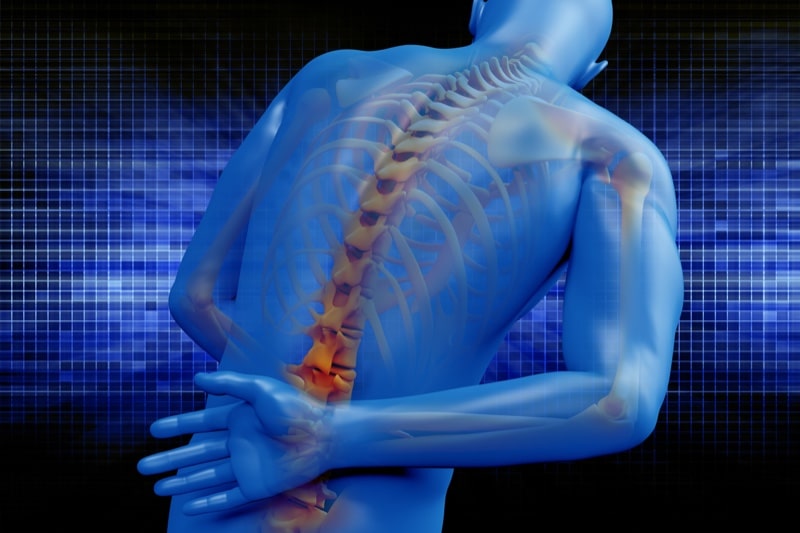
The spine is a complex structure composed of vertebrae, discs, nerves, and muscles. It provides support, flexibility, and protection for the body and is vital for normal function.
Unfortunately, the spine is susceptible to various injuries, with certain areas more prone to damage than others.
Learn more about the most common spine injuries, how they can affect a victim, and when to contact the medical malpractice team at Baird Mandalas Brockstedt & Federico.
Which Portions of the Spine Are the Most Vulnerable to Injury?
According to researchers, spinal cord injuries are most common in the cervical region at the upper-most region of the spine which starts just below the skull, and the lumbar region, which includes the lower portion of the spine.
These injuries can cause various debilitating symptoms depending on their severity and location. Understanding which portions of the spine are the most vulnerable is crucial for injury prevention and effective management.
Cervical Spinal Injuries
Cervical spine injuries encompass a range of traumas affecting the neck’s vertebrae, often resulting from accidents or a sudden impact. These can include the following.
- Whiplash Injuries. These types of injuries are common in car accidents. Whiplash can cause neck pain, stiffness, headaches, and restricted movement.
- Herniated Discs. When the disc’s inner core protrudes, it can press on nearby nerves, leading to pain, numbness, or weakness in the neck, shoulders, arms, or hands.
- Cervical Fracture. Severe trauma to the head and neck may cause fractures in the vertebrae, leading to intense pain, difficulty moving the neck, and tingling or weakness in the limbs.
Cervical spine injuries can be tricky, as your symptoms might not appear immediately after the trauma. Seeking medical help after an accident or other trauma is vital to preserving both your health and potential legal claims.
Lumbar Spinal Injuries
Lumbar spinal injuries involve damage to the lower back’s vertebrae, discs, or surrounding tissues, and the symptoms can be devastating. Damage to this portion of the spinal cord can also cause significant mobility problems. Types of lumbar spine injuries include the following.
- Herniated disc. Wear and tear, or sudden injury can cause a disc’s inner gel-like material to protrude, leading to nerve compression and resulting in lower back pain, tingling, numbness, or weakness that radiates down one or both legs. This is often known as sciatica.
- Lumbar strains. Overexertion, sudden movements, or improper lifting can strain or tear muscles or ligaments supporting the lower back. This leads to localized pain, stiffness, and limited mobility.
- Spinal stenosis. Typically linked to aging or degenerative illnesses, this condition involves the narrowing of the spinal canal. Symptoms include lower back pain, numbness or weakness in the legs, and sometimes issues with bladder or bowel function.
Injuries to the lumbar spine can significantly impact daily life and mobility. Seeking medical attention for proper diagnosis and treatment is vital for managing symptoms and restoring functionality. Treatment for lumbar spine injuries often involves physical therapy or in severe cases, surgery.
Other Spinal Injuries
While lumbar and cervical spine injuries may be the most common ailments, injuries to other areas of the spine can have a significant impact on your life as well.
Thoracic Spinal Injuries
The thoracic area is the middle section of the spine. It starts at the base of the neck and ends at the bottom of the ribs. Common injuries to this area include compression fractures caused by trauma or degenerative disease, and muscle strains caused by overexertion or sudden movements.
Sacral Spinal Injuries
This area comprises the very bottom of the spinal cord and the coccyx, more commonly known as the tailbone. Falls or trauma can cause fractures or even dislocation of the sacrum or coccyx.
When to Seek Medical Attention
A victim of a spine injury should seek immediate medical attention to ensure timely treatment or surgical intervention, and to prevent potential future complications.
This is true even if symptoms do not appear immediately after an injury. Proper diagnosis and treatment help mitigate potential complications and ensure the best recovery outcomes.
You should seek medical attention for your neck or back injury if you experience any of the following:
- Intense and persistent pain in the neck, back, or along the spine;
- Loss of sensation or tingling in the limbs;
- Difficulty walking or moving;
- Changes in bladder or bowel function; and
- Painful or restricted movement.
Following a significant impact, fall, or accident involving the neck or spine, it’s crucial to get assessed by a healthcare professional, even if you aren’t suffering any immediate symptoms.
Some spinal injuries may not present immediate symptoms but could be severe and still require immediate medical intervention. Ultimately, it’s essential to seek help as soon as possible if any of these signs or symptoms manifest after a potential spinal injury.
Spine Injury Treatments and Recovery
Treatment types and recovery times for common spine injuries vary based on the severity and type of injury. Mild back and neck injuries often respond to conservative treatments like rest, physical therapy, and pain management through medication or injections to reduce inflammation and alleviate discomfort.
A doctor may also direct a patient to use braces or immobilization devices for stability and support during healing, particularly for fractures or severe strains.
Sometimes, serious cases such as spinal fractures, herniated discs, or spinal cord compression may require surgical intervention to stabilize the spine, remove damaged tissues, or relieve pressure on nerves.
Surgery is often followed by weeks to potentially months of rehabilitation and physical therapy. Unfortunately, there are severe cases that require long-term or lifelong care, including regular medical check-ups, pain management, or assistive devices to improve quality of life and manage any chronic conditions resulting from the injury.
Seek Legal Help at Baird Mandalas Brockstedt & Federico Today
Injuries to the spine can be debilitating and leave you unable to work or even function normally. If you have suffered one of these injuries and have questions about your legal rights, contact the experienced medical malpractice attorneys at Baird Mandalas Brockstedt & Federico today.
We have decades of experience serving Maryland clients and will be your advocate throughout the process. Contact us today to get started.


